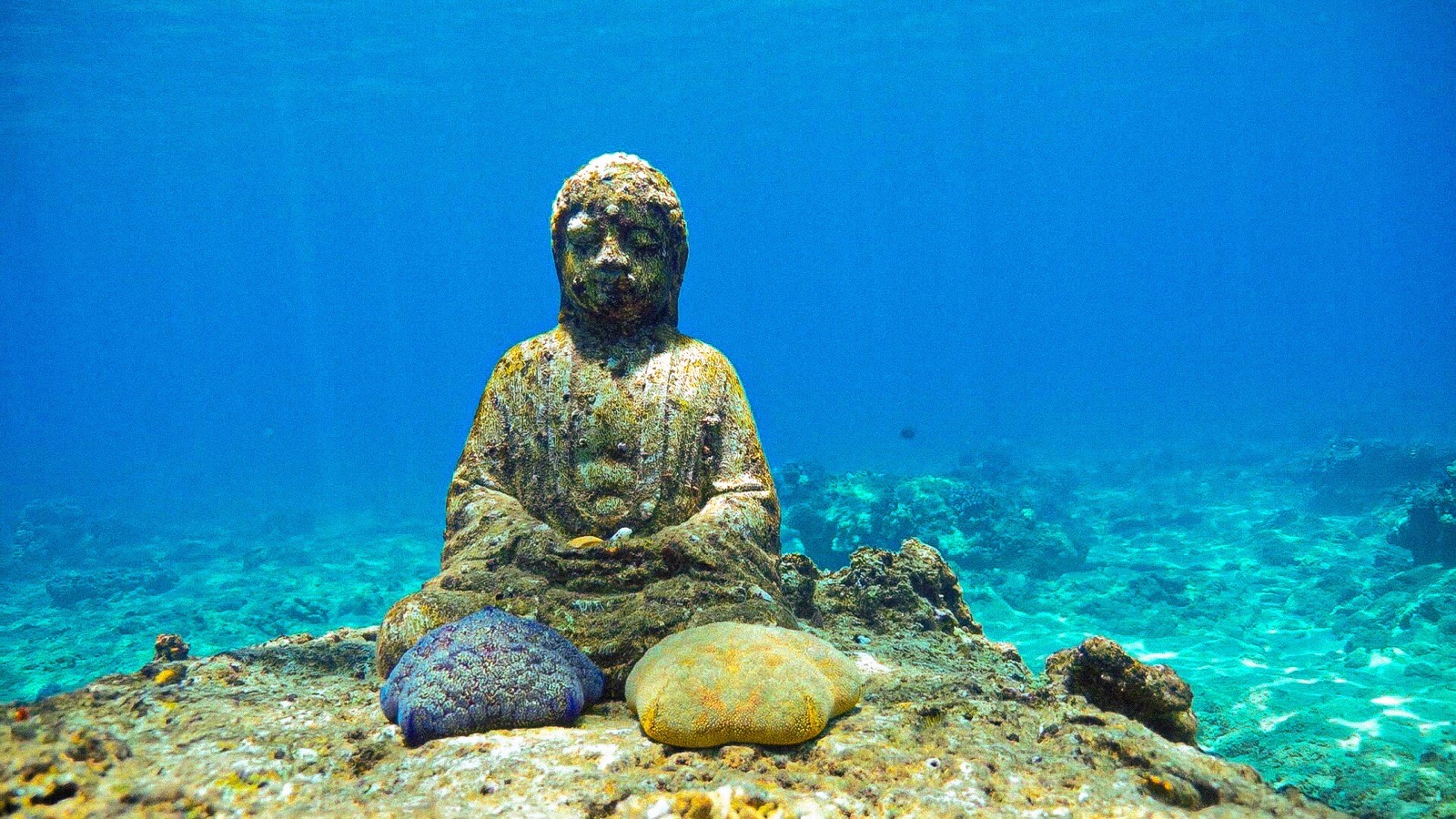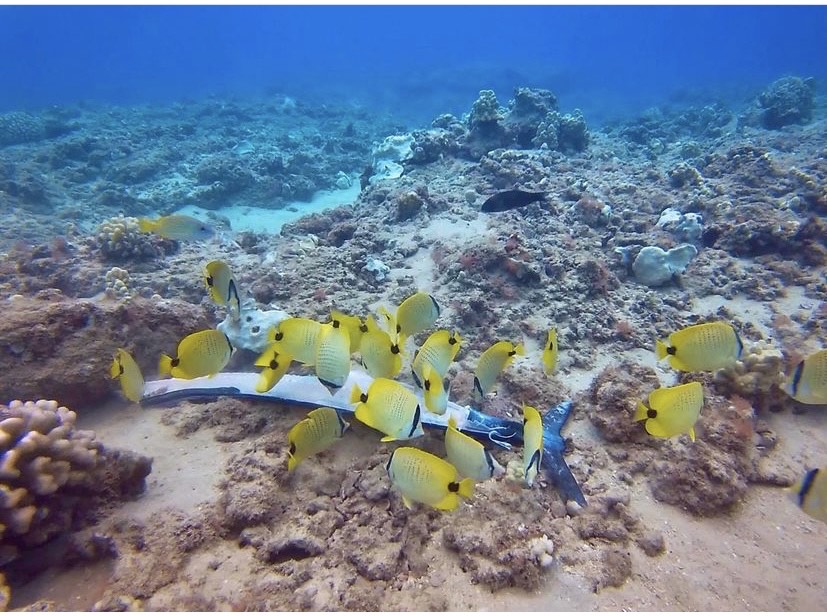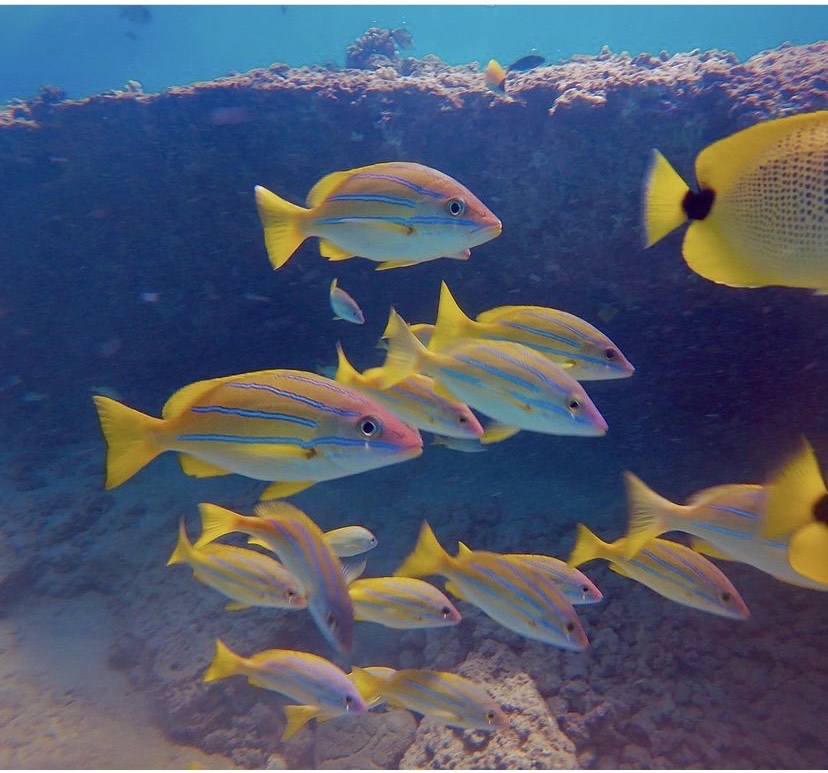SCUBA DIVING NEAR AULANI RESORT

Scuba Diving Near Aulani Resort
On the southwest end of Oahu, less than a 30 minute ride from the airport, lies the beautiful Aulani Disney Resort and Spa. And with a short 5 minute drive up the road, you arrive at one of our favorite dive sites on the island: Electric Beach. Aptly named because of it’s proximity to the electric Kahe Power Plant, the power plant works to the adventures advantage. Two of the plants cooling pipes shoot warm water into the ocean, attracting all kinds of ocean life. Getting in the water proves easy here too. A sandy slope widens out into the great spaces for diving. The walk in is easy – just remember to wait out the set! Here is what scuba diving near Aluni Resort looks like:
Electric Beach
One of our first destinations on our Electric Beach dive is the underwater Buddha, sometimes complete with offerings.
On the day Laura took this picture, the Buddha received two cushion starfish. A picture meditating with the Buddha is always a diver favorite!
One of Hawaii’s endemic species, a species that only exists here in Hawaii, is the Milletseed butterflyfish, also commonly known as lemon butterflyfish because of its bright color. They also have the Hawaiian name of lau wiliwili, from the wiliwili tree whose leaf’s shape these fish resemble.
Here, Zoe captured the butterflyfish eating the remains of another fish on the reef, though they usually feed on zooplankton along the reef.
Recognize this guy from Finding Nemo? The character Gill is a moorish idol, a creature whose striking color makes it difficult for predators to comprehend where the bodies outline truly is, therefore making these fish hard to catch.
One of the most common reef fish out here is the blue-stripped snapper. They were brought to Hawaii in the 1950’s but are now considered invasive. They also go by their Tahitian name, Ta’ape, and are occasionally toxic to eat.
Come dive with us and we will point out these fish and more!




